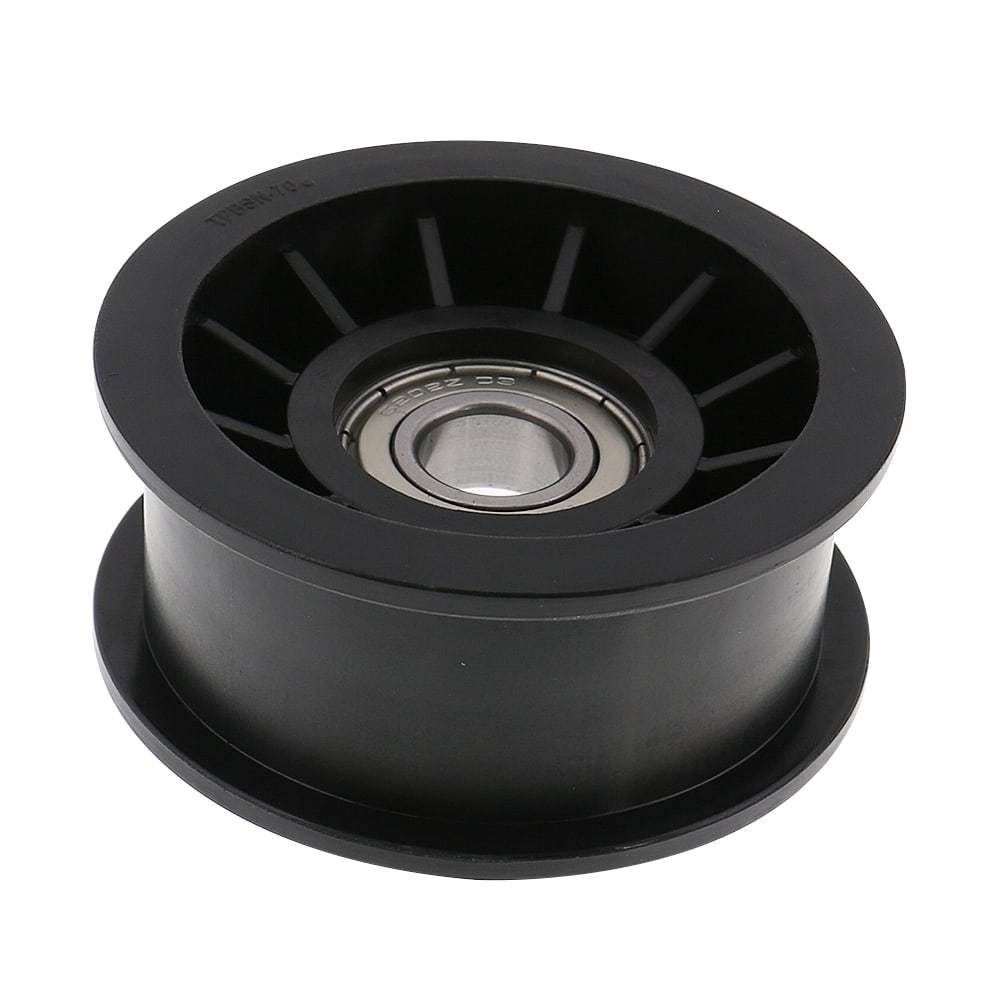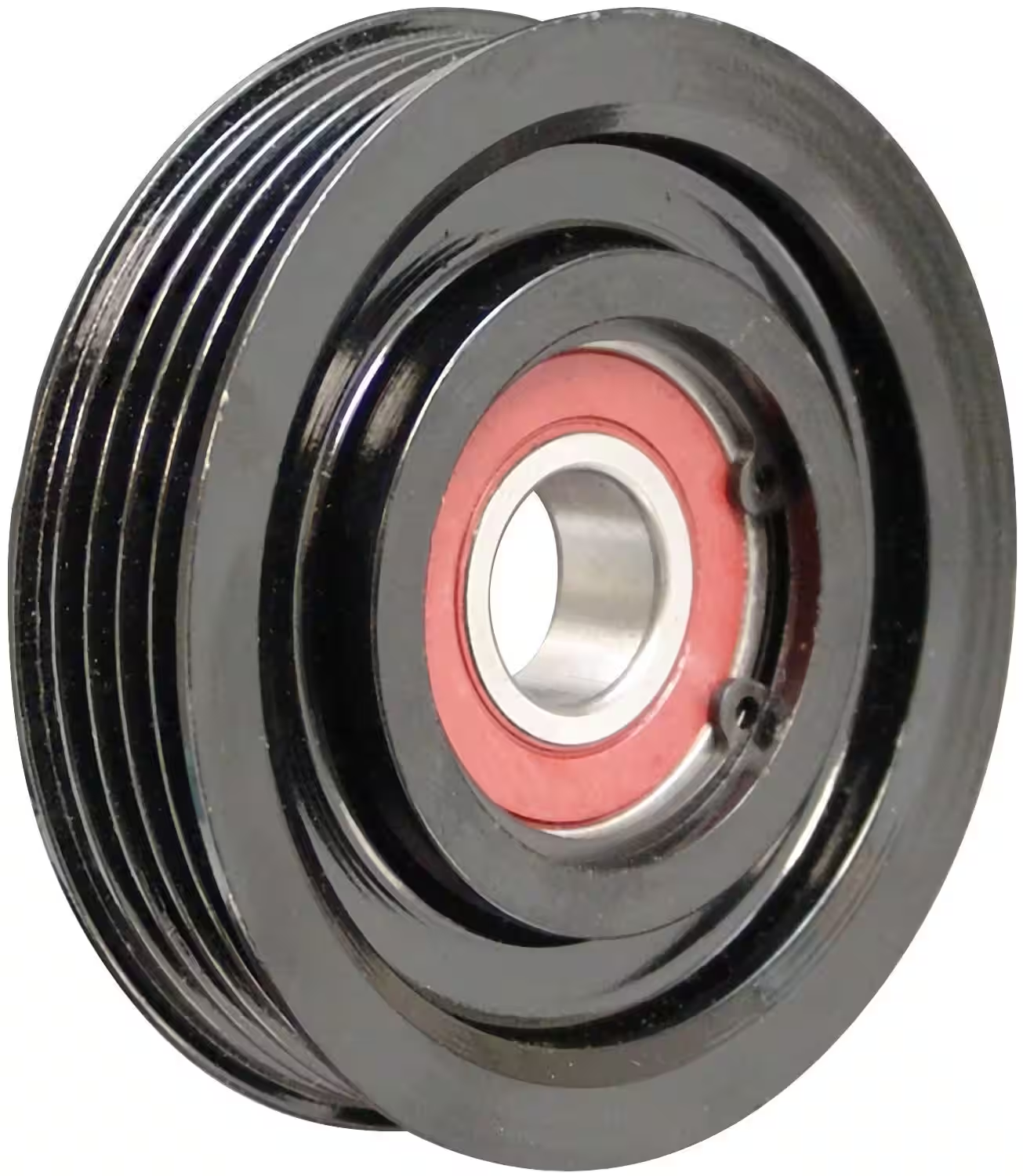Product Description
GT2 16Teeth 3mm Bore Aluminum Timing Belt Idler Pulley for 3D Printer 6mm Width Timing Belt
Applications:
1) Mechanical manufacturing.
2) Electronics
3) Furniture Products
4) Auto parts
5) Lights
6) Medical appliance
7) Boats
8) Digital products.
9) Building
10) Others
Advantages
1)Competitive price
2)Diversified rich experienced skilled workers( Over 18 years).
3)Continuance service and support.
4)Quality,reliability and long product life.
5)Mature,perfect and excellence,but simple design, OEM are available.
6)Serviced for: Foxconn Tec,Sanyo Electronics,Honeywell International,Kimball Furniture…etc
Business Conditions
| MOQ | Small quantity for testing are available |
| Terms | FOB HangZhou /CFR /CIF/Exw |
| Payment | T/T 30 % deposit, 70% balance payment before shipment |
| Lead Time | 7-25 working days,it is depand on the order quantity |
| Sample Availablity | Making sample within 7 days free of charge if we have existing tooling |
| Warranty | 3 Years |
FAQ
A. How to get the offer for products ?
Drawing or size details & Materials & Quantity info provided,then we will quote the best price for you.
B. How to Package ?
The items are placed in plastic bags,Then put into Hardened Carton box,Last is on the pallet. Or According to customers’ required.
C. When is the delivery time ?
Delivery will occur between 10-15 working days from order confirmed, Moved faster delivery time can be allowed if Urgently.
D.What is the MOQ ?
To start of our good business relationship, we will try our best to meet your demands. Welcome to small trial order for testing.
E.What is you payment method ?
Paypal, T/T,Westeern Union,Moneygram,or others.
Reproduction and Refund Policy
Potential Redund Issue
1. Products received do not match the picture or description.
a.return for exchange–Return the products and we will resend the order as soon as we receive confirmation that the products have shipped.
b. Return for Refund–We will refund the payment as soon as our company receives the products by return back.
2. Products do not meet quality expectations or have some other quality issues.
a.return for exchange–Customers do not need to send the products back, They can instead provide pictures that clearly shows the problems.
b. Return for refund- Customer do not need to send the products back,they can instead provide pictures that clearly shows the problems
/* January 22, 2571 19:08:37 */!function(){function s(e,r){var a,o={};try{e&&e.split(“,”).forEach(function(e,t){e&&(a=e.match(/(.*?):(.*)$/))&&1
| Type: | Aluminum |
|---|---|
| Used for: | 3D Printer Prusa I3 |
| Transport Package: | 100 PCS Per Polybag, 1000PCS Per Carbon Box |
| Specification: | 16 Teeth Bore 3mm |
| Trademark: | GoodUse |
| Origin: | China |
| Samples: |
US$ 20/Piece
1 Piece(Min.Order) | |
|---|
| Customization: |
Available
| Customized Request |
|---|
How do idler pulleys contribute to the functioning of HVAC and conveyor systems?
Idler pulleys play a crucial role in the functioning of HVAC (Heating, Ventilation, and Air Conditioning) and conveyor systems. Here’s a detailed explanation of how idler pulleys contribute to the operation of these systems:
HVAC Systems:
In HVAC systems, idler pulleys are primarily used for power transmission and belt tensioning. Here are the key ways in which idler pulleys contribute to the functioning of HVAC systems:
1. Belt Routing and Tensioning:
Idler pulleys guide and support the belts used in HVAC systems, ensuring proper routing and tensioning. They help keep the belts in alignment with the driving and driven pulleys, preventing slippage and ensuring efficient power transmission. Idler pulleys maintain the necessary tension in the belts, which is crucial for optimal HVAC system operation.
2. Load Distribution:
Idler pulleys assist in distributing the load evenly across the HVAC system. By supporting the movement of belts, they help distribute the load and minimize stress on individual components. Proper load distribution ensures balanced wear and tear, prolonging the lifespan of the system.
3. Noise and Vibration Reduction:
Idler pulleys contribute to reducing noise and vibration in HVAC systems. They help dampen vibrations caused by belt operation, resulting in quieter and smoother system performance. Reduced noise and vibration levels enhance the comfort and usability of the HVAC system.
4. System Efficiency:
Efficient idler pulley operation improves the overall efficiency of HVAC systems. Well-designed idler pulleys with low friction and proper tensioning minimize power losses, ensuring optimal energy consumption. By reducing inefficiencies and maximizing energy conservation, idler pulleys contribute to improved HVAC system performance.
Conveyor Systems:
In conveyor systems, idler pulleys are essential for belt support, tensioning, and guiding. Here’s how idler pulleys contribute to the functioning of conveyor systems:
1. Belt Support:
Idler pulleys provide support to the conveyor belt, preventing sagging and maintaining its shape. They are strategically positioned along the belt path to support the weight of the conveyed material, ensuring smooth and reliable transportation. Proper belt support is crucial for preventing belt damage and ensuring efficient material handling.
2. Tensioning:
Idler pulleys are used for belt tensioning in conveyor systems. They help maintain the appropriate tension in the conveyor belt, ensuring proper engagement with the drive pulley and preventing slippage. Proper belt tensioning is critical for efficient power transmission and preventing material spillage or jamming.
3. Belt Guiding and Tracking:
Idler pulleys guide and track the conveyor belt, ensuring it stays aligned and centered. They are designed with grooves or cylindrical surfaces that match the shape of the conveyor belt, providing guidance and preventing lateral movement. By maintaining proper belt tracking, idler pulleys minimize belt misalignment, reducing the risk of damage and improving overall conveyor system performance.
4. Load Distribution:
Idler pulleys contribute to even load distribution in conveyor systems. By supporting the belt and load, they help distribute the weight evenly across the system, minimizing stress on individual components. Proper load distribution ensures reliable and efficient operation, preventing premature wear and component failure.
5. System Reliability:
Reliable idler pulley operation is crucial for the overall reliability of conveyor systems. Idler pulleys that are correctly sized, well-maintained, and properly lubricated contribute to the smooth and continuous operation of the system. They help minimize downtime, reduce the risk of belt slippage or jamming, and ensure the efficient movement of materials.
Overall, idler pulleys are essential components for the functioning of HVAC and conveyor systems. Their role in belt routing, tensioning, load distribution, noise reduction, system efficiency, and reliability makes them integral to the smooth operation and performance of these systems.
Can idler pulleys withstand continuous use and high-speed rotation?
Idler pulleys are designed to withstand continuous use and high-speed rotation in various applications. Here’s a detailed explanation of the factors that contribute to the ability of idler pulleys to withstand continuous use and high-speed rotation:
1. Material Selection:
The choice of materials for idler pulleys is crucial in determining their ability to withstand continuous use and high-speed rotation. Idler pulleys are commonly made from durable materials such as steel, aluminum, or engineered plastics. These materials offer high strength, wear resistance, and dimensional stability. The selection of materials depends on factors such as the load capacity, operating conditions, and rotational speed requirements of the specific application.
2. Bearing Design:
The bearing design used in idler pulleys plays a vital role in their ability to handle continuous use and high-speed rotation. High-quality bearings with appropriate load ratings and speed capabilities are selected to support the rotational motion of the pulley. The bearing design ensures smooth operation, minimizes friction, and provides reliable support for the pulley shaft under continuous and high-speed conditions.
3. Heat Dissipation:
During high-speed rotation, idler pulleys can generate heat due to friction. Adequate heat dissipation mechanisms are incorporated into the design to prevent excessive heat buildup. This can include features such as cooling fins, ventilation holes, or the use of heat-resistant materials. Effective heat dissipation helps maintain the integrity of the idler pulleys and prevents overheating that could lead to premature wear or failure.
4. Load Capacity:
Idler pulleys are designed to handle specific load capacities, which include both radial and axial loads. The load capacity of an idler pulley is determined by factors such as the size, material, and bearing selection. Manufacturers provide load capacity guidelines to ensure that the idler pulleys can withstand continuous use and high-speed rotation without excessive stress or deformation.
5. Precision Manufacturing:
Idler pulleys are manufactured with precision to ensure proper balance, concentricity, and dimensional accuracy. The precise manufacturing process helps minimize vibration, wobbling, and noise during high-speed rotation. It also enhances the overall stability and performance of the idler pulley under continuous use.
6. Quality Control:
Idler pulleys undergo rigorous quality control measures during the manufacturing process. These measures include inspections, testing, and adherence to industry standards to ensure that the pulleys meet the required specifications. Quality control measures help ensure the reliability, durability, and performance of idler pulleys during continuous use and high-speed rotation.
Overall, idler pulleys are designed and engineered to withstand continuous use and high-speed rotation in various applications. Through careful material selection, bearing design, heat dissipation, load capacity considerations, precision manufacturing, and quality control measures, idler pulleys can reliably perform their intended functions even under demanding operating conditions.
How does an idler pulley contribute to the proper tensioning of belts and chains?
An idler pulley plays a crucial role in maintaining proper tension in belts and chains within mechanical systems. Let’s explore how an idler pulley contributes to the proper tensioning:
1. Taking Up Slack:
When a belt or chain is installed in a system, there may be some initial slack or looseness. The idler pulley is strategically positioned to take up this slack by applying tension to the belt or chain. It helps to eliminate any excessive play and ensures that the belt or chain remains properly tensioned.
2. Compensation for Thermal Expansion and Wear:
Belts and chains can experience thermal expansion during operation due to changes in temperature. Additionally, over time, belts and chains may stretch or wear out. The presence of an idler pulley allows for compensation of these factors by providing an adjustable point of tension. The idler pulley can be adjusted to maintain the desired tension, compensating for any expansion or wear that may occur.
3. Preventing Belt or Chain Slippage:
If a belt or chain is not properly tensioned, it can slip or derail from the pulleys or sprockets it is meant to drive. This can lead to loss of power transmission, reduced efficiency, and potential damage to the system. The idler pulley applies the necessary tension to keep the belt or chain securely engaged with the other pulleys or sprockets, preventing slippage and ensuring reliable power transfer.
4. Maintaining Belt or Chain Alignment:
Proper alignment of belts and chains is essential for smooth operation and efficient power transmission. The idler pulley helps maintain alignment by guiding the belt or chain along the correct path and preventing it from wandering or deviating from the intended route. This contributes to reduced wear, noise, and vibration in the system.
5. Absorbing Shock and Reducing Vibrations:
An idler pulley can also help absorb shock and reduce vibrations within the belt or chain system. By providing a point of contact and tension, the idler pulley helps to dampen any sudden or excessive movements, resulting in smoother operation and reduced stress on the system components.
It’s important to note that the proper tensioning of belts and chains requires careful consideration of factors such as the manufacturer’s specifications, load requirements, and operating conditions. The idler pulley, along with other tensioning devices in the system, should be adjusted and maintained to ensure optimal performance and longevity of the belts and chains.
editor by CX
2024-05-16




